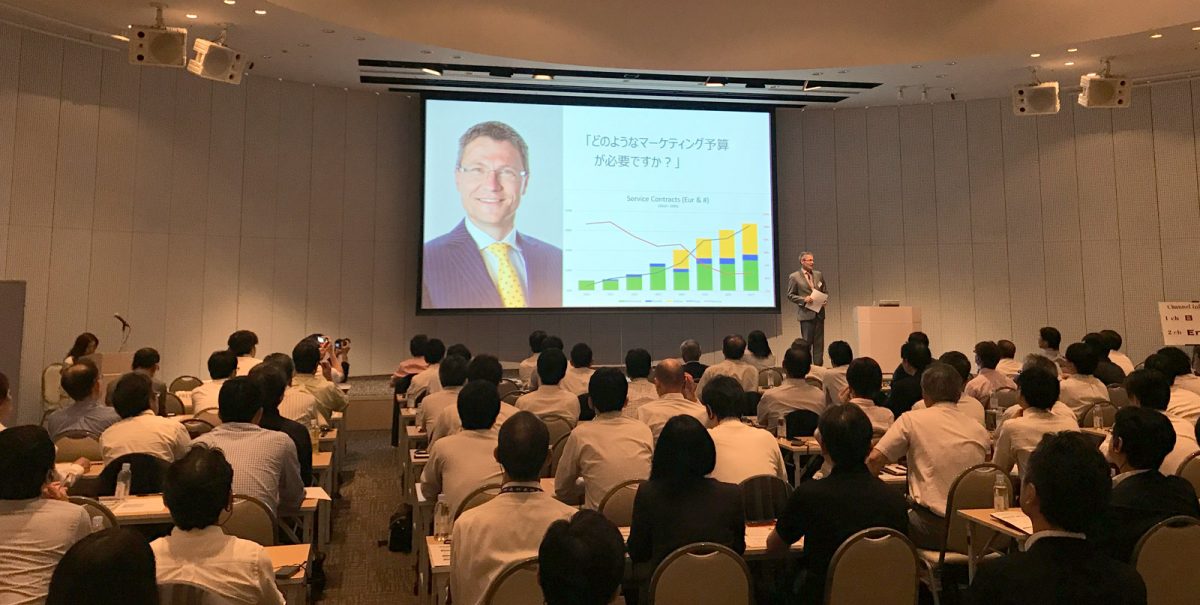Selling preventive maintenance is not what it used to be. In the old days a manufacturer could use its expert position to prescribe a maintenance scheme. Today, a combination of emerging technologies and pressure from buyers to do it cheaper/ smarter warrant a revisiting of the value proposition of preventive maintenance.
PM = Periodical Maintenance
As acronym we use PM. When talking we utter the words preventive maintenance. But what do we really mean?
- Planned Maintenance
- Periodical Maintenance
- Predictive Maintenance
- Prescriptive Maintenance
Analysing a lot of service contracts offered by OEMs we still see most of the maintenance is periodical or counter based. Just like the maintenance interval for your car; a PM each year or at 15,000 km.
All those periodical or counter based maintenance jobs are good service revenue for your service organisations But what happens when customers start challenging you? What if the customer has access to knowledge that amends or contradicts the engineering assumptions that led to the definition of your current maintenance intervals?
Buyers seek to reduce maintenance cost
In a world where people are more vocal, we see customers expecting things to work and buyers seeking to reduce maintenance cost. These expectations impact the way we sell service contracts.
Selling is more straight forward when you can see a direct relationship between the pain and the gain. Such a link is obvious for installation and break-fix activities. But it is less apparent for preventive maintenance. Try to picture buyers asking these questions:
- What does PM prevent and what is the risk that remains?
- What is the rationale of the current maintenance interval?
- Nothing happened last year. What will happen if we skip or delay a PM?
- Can you dissect the PM job in activities (show me what you do) and is it really necessary to have all those activities done by an experienced/ expensive technician as yours?
- Can we do pieces of the PM job ourselves?
You get the gist of the conversation and know where it is leading less cost for your customer at the expense of less PM revenue for your service organisation.

What complicates the selling of service, is that in most scenarios the buyer and the customer/ user are not the same person. You may convince the user of a piece of equipment to do preventive maintenance, the buyer on the other hand has a different set of objectives. Most likely the buyer will push you on a path towards commoditising and cannibalising your PM services. All in order to reduce cost.
Rediscovering value
To stay ahead of the game let’s dissect PM along the lines of value creation for the customer. High level you can split a PM into three pieces:
- The execution of the maintenance activities
- The reporting on those activities
- The communication and interpretation of the results
Ask your customers to rate the value of each of those pieces. It’s probable that you will find that the business value of PM to a lesser extent is in the execution and more in the reporting and communication.
Maybe you pride yourself in your uniqueness of execution, whereas the customer might perceive it as a commodity. If also reporting and communication are on par, you may face price erosion.
If your customer needs the PM report for compliance or insurance purposes, the value of the report increases. When you consider that PM is often a play of risk and liability, you can price the value of your brand. Example: It does make a difference to an insurer if a yearly PM/ inspection is performed by a triple A company or a middle of the road company.
Communication value comes into play when your customer expects you to be a partner rather than a supplier.
- Supplier – “just send me the PM report, I’ll read and interpret it myself. When I need assistance, I’ll contact you.”
- Partner – “help me interpret the findings and consequences of the PM. How does this impact my business?”.
In the latter situation you can monetise the communication beyond the effort of having a conversation for a couple of hours. PM can thus elevate from an obligatory periodical execution to an instrument of customer satisfaction and cross- and upselling.
Repackaging the preventive maintenance offering
In order to retain and expand your PM revenue stream in a context where the buyers move to reduce their spend, do go in discovery mode and (re)define preventive maintenance. PM is not a singular black box once defined by somebody in engineering with a product focus. Modern PM is a menu of choices (and consequences) for your buyer based on the usage profile of the product, budget and risk.
This article is published in Field Service News Jan/Feb 2020 issue.













